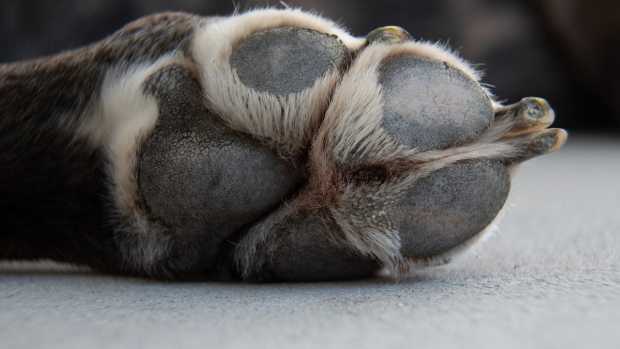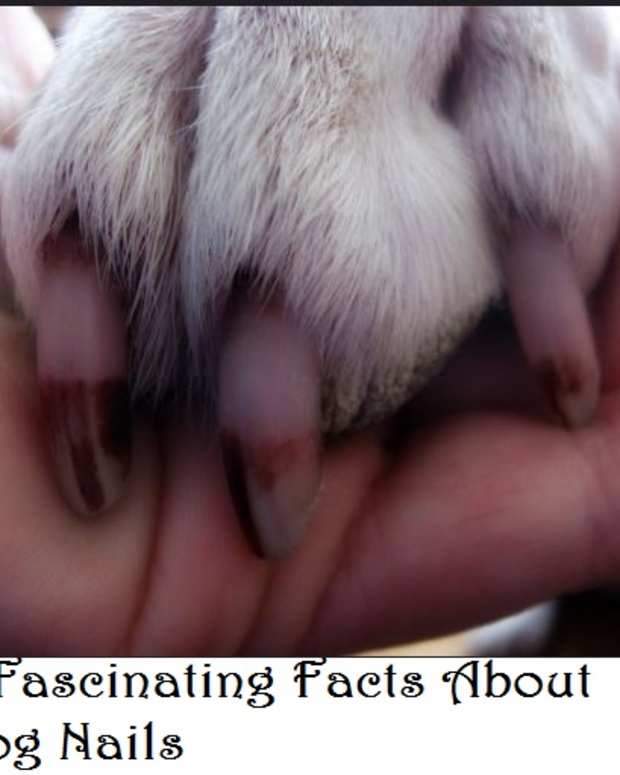Why is My Male Dog Bleeding From His Private Area? Vet Answers
A dog bleeding from any part of the body should not be taken lightly. When it comes to bleeding from the dog’s private area, there are several possible causes.
In this article, we will talk about the reasons a dog may bleed from his private area.
We will also explain what happens at the vet’s office and how to manage the situation.
Help, My Dog Is Bleeding From His Private Area!
Seeing your dog bleed is a distressing situation, and in many cases, it can even be an emergency.
When a dog is bleeding from its private area, there are three possible scenarios:
- The bleeding occurs at the beginning of the urination
- The bleeding occurs at the end of the urination
- The bleeding occurs at random times, regardless of urination
Additionally, a dog bleeding from its private area will show other signs and symptoms. Usually, they include:
- Increased/decreased urine volume
- Increased/decreased urination frequency
- Reduced or completely loss of appetite
- Weakness and disinterest in everyday activities
Both the bleeding type and the accompanying signs and symptoms indicate the underlying cause.
Causes Of Bleeding From The Private Area In Male Dogs
There are many reasons a dog may bleed from his private area. For easy understanding, the possible causes are divided into four categories:
- Injuries of the dog's penis or prepuce
- Urinary tract conditions
- Prostate problems
- Blood-clotting disorders
Here is a closer look at each category and the different conditions within those categories.
1. The Dog Injured His Private Area
Dogs are mischievous and can easily sustain an injury to the penis or prepuce.
The most common situations resulting in such injuries include animal attacks, mating-related trauma, traffic injuries, and jumping over high fences.
The dog’s private area is very delicate, and even smaller injuries may result in severe bruising, lacerations, and bleeding.
Considering the area’s sensitivity, the situation is painful and requires immediate veterinary care.
Treatment
The exact treatment depends on the severity of the injury.
Generally speaking, lacerations require suturing. In extreme cases, amputation of the penis might be recommended (if treatment is delayed and there is gangrene).
If there is extensive bruising and swelling, the vet will prescribe anti-inflammatory medications, and if there is a risk for infections, antibiotics.
2. Urinary Tract Conditions
There are three urinary tract conditions that can result in bleeding from the dog’s private area: urinary tract infections, bladder stones, and tumors.
Urinary Tract Infections
Urinary tract infections (UTIs) are very common in dogs and are usually caused by bacteria (the usual culprit is Escherichia coli).
UTIs are more prevalent in older female dogs and dogs with certain preexisting conditions such as diabetes mellitus and bladder stones.
Increased urination frequency and straining while urinating are the telltale signs of urinary tract infections.
Bleeding from the private area is also possible in dogs with UTIs.
Treatment
The mainstream treatment for urinary tract infections in dogs is a long course of antibiotics.
Dogs that are in pain due to the infection also benefit from anti-pain medications.
Recent treatment protocols include probiotics for quicker and more straightforward recovery from urinary tract infections.
3. Bladder Stones
Bladder stones in dogs, as the name suggests, are rock-like formations made of minerals.
They are also known as uroliths or cystic calculi.
They can develop a single formation or be present in large numbers.
Either way, bladder stones are painful and problematic - they scrape the wall of the bladder, causing bleeding.
The exact cause of bladder stones is poorly understood. It is believed that it is linked with previous bladder inflammation.
There are different types of bladder stones in dogs, and some are more common among certain breeds.
Treatment
In most cases, dogs with bladder stones require surgery to remove the stones and prevent further clinical signs and symptoms.
Smaller stones can be eliminated via urine, but this can be excruciating.
4. Urinary Tract Tumors
Urinary tract tumors can affect different parts of the urinary system.
However, bladder tumors in dogs, more precisely known as transitional cell carcinomas (TCCs), are the most common.
TCC is also known as urothelial carcinoma.
TCC stems from the transitional epithelial cells lining the wall of the bladder.
It spreads to lymph nodes and other organs, mainly the lungs and liver.
This type of bladder cancer is prevalent in Scottish Terriers, Wire Fox Terriers, West Highland Terriers, Beagles, and Shetland Sheepdogs.
Treatment
There are different treatment options based on the type of tumor. The usual options include radiation, chemotherapy, and surgery.
A combination of these can also be recommended.
5. Prostate Problems
The most common cause of bleeding from the private area in intact male dogs is BPH - benign prostatic hyperplasia.
Other prostate problems that can result in bleeding are prostatitis and prostatic cancer.
Benign Prostatic Hyperplasia
Benign prostatic hyperplasia is a non-cancerous enlargement of the prostate and is quite common.
Basically, all male uncastrated dogs will develop BPH at some point in their lives.
The condition is associated with old age, and it is due to prolonged exposure to the male hormone testosterone.
Benign prostatic hyperplasia is not a life-threatening condition, and it only makes trouble if the enlargement is significant.
Due to the pressure on the rectum, dogs with BPH produce ribbon-shaped stools.
Another possible symptom is bleeding.
Treatment
The treatment for dogs with benign prostatic hyperplasia is simple and includes castration - removal of the testicles and source of testosterone.
After the surgery, the prostate will reduce in size.
Prostatitis
Prostatitis is inflammation of the prostate gland. It occurs as a result of bacterial and, in rare cases, fungal infections.
Such infections are more common in intact than in fixed (castrated) male dogs.
There are two forms of prostatitis in dogs - acute and chronic.
The acute form is much more intense and with striking clinical signs and symptoms like bleeding from the penis, loss of appetite, overall weakness, etc.
Treatment
Dogs with prostatitis require a long course of antibiotics.
Lengthy use is important because it is hard for the meds to reach the prostate tissue.
Usually, vets prescribe trimethoprim sulfa, enrofloxacin, or chloramphenicol for prostatitis.
Prostatic Cancer
Prostatic cancer in dogs is not a common diagnosis. However, there is a greater risk among certain breeds, such as Scottish Terriers and Shetland Sheepdogs.
There are different types of prostate cancer.
The most prevalent type of prostate cancer is adenocarcinoma, and it is not hormone-dependent meaning it occurs in both intact and castrated male dogs.
The cancer is extremely aggressive and forms metastasis.
Treatment
There are several treatment options for dogs with prostatic cancer, including surgery, radiation, and chemotherapy.
Some dogs need a combined treatment. However, in most cases, the prognosis for dogs with prostatic cancer is poor.
6. Blood-Clotting Disorders
Finally, bleeding from the penis can be caused by blood-clotting disorders. They can be inherited or caused by poisoning.
Von Willebrand’s Disease
Von Willebrand’s disease is the most common genetic blood-clotting disorder in dogs.
It develops when the dog is deficient in the von Willebrand factor (vWF). This factor is actually a specific protein essential for normal blood clotting.
The disease is widespread among Doberman Pinschers, but luckily, the disorder is relatively mild in this breed.
Other commonly affected breeds include Scottish Terriers, Shetland Sheepdogs, and Chesapeake Bay Retrievers.
Dogs with Von Willebrand’s disease may spontaneously bleed from body orifices (openings).
Also, in case of an injury, they will bleed longer and more profusely.
Treatment
In emergency situations, dogs with von Willebrand’s disease require transfusion.
If possible, the dog donating the blood should be treated with a drug named DDAVP (it increases the amount of vWF in the blood).
7. Rat Bait Poisoning
Rat baits or rodenticides contain anticoagulants, and dogs can accidentally get poisoned if they swallow the bait.
Considering how curious and mouthy dogs are, such accidents are common.
As the name implies, anticoagulants block the normal blood clotting cascade and cause bleeding from natural openings (including the penis in male dogs).
In some cases, the bleeding is not apparent at first, as the dog bleeds on the inside.
Treatment
Dogs with severe rat bait poisoning and extensive blood loss require emergency blood transfusion and oxygen support for stabilization.
Luckily, there is a specific antidote - vitamin K1.
Vitamin K1 is given for an extended period (in some cases, even for several months).
Vitamin K1 is available in the form of oral tablets and injections. The injectable forms must be administrated by a licensed veterinarian.
Conclusion: Male Dogs Bleeding From Their Private Areas
If your male dog is bleeding from its penis, you need to see the vet as soon as possible.
Some causes of bleeding from the private area are simple to treat, but others require a more extensive and aggressive approach. Hence, time is vital.
Also, pay attention to accompanying signs and symptoms, and do not forget to mention to the vet changes in your dog’s behavior prior to the bleeding.
The more information you provide, the easier it will be for the veterinarian to evaluate your dog and then adequately diagnose and treat it.
Disclaimer: this article is not meant to be used as a substitute for professional veterinary advice or behavioral advice. If your dog is acting sick or aggressive please consult with a qualified professional for proper diagnosis and treatment.



















